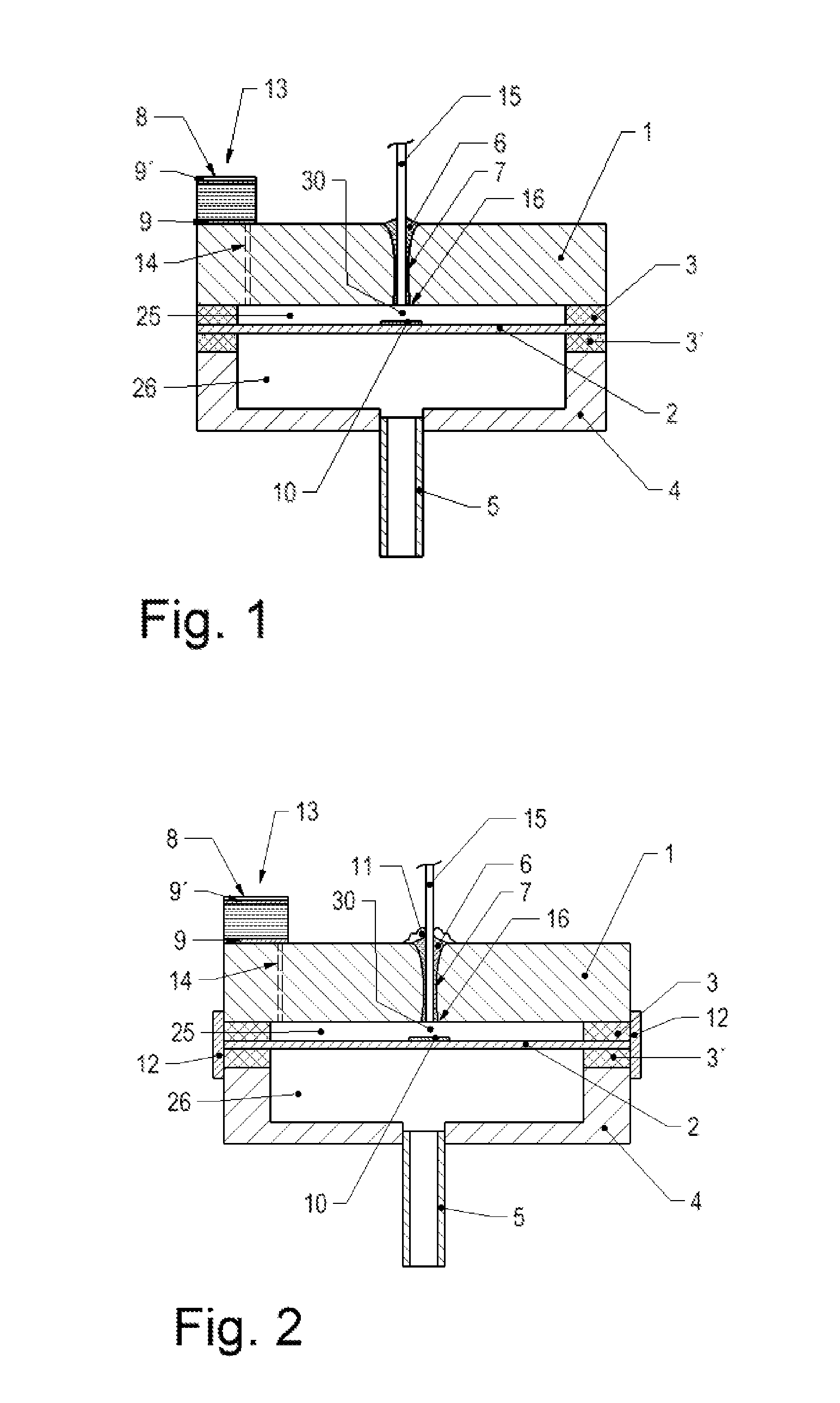Optical Interferometric Pressure Sensor
a pressure sensor and optical diaphragm technology, applied in the direction of fluid pressure measurement, fluid pressure measurement by electric/magnetic elements, instruments, etc., can solve the problems of increasing the cost of measurement, affecting the sensitive sensor characteristic, and not being able to achieve sup>mbar with silicon, etc., to achieve mechanical stability, reduce cost, and suffer less from temperature expansion distortion
- Summary
- Abstract
- Description
- Claims
- Application Information
AI Technical Summary
Benefits of technology
Problems solved by technology
Method used
Image
Examples
Embodiment Construction
[0042]The preferred inventive arrangement of an ODG (Optical Diaphragm Measuring Cell) measuring cell made of Al2O3 with a structure essentially symmetrical about the membrane 2 is illustrated by the cross-section in FIG. 1. The first housing 1 body consists of a ceramic plate made of Al2O3 which along its edges is tightly bonded at a distance of 5 μm to 80 μm relative to the ceramic membrane 2 and which encloses a reference pressure chamber 25 which is preferably a vacuum chamber. The distance between the two surfaces is usually established directly during the assembly by means of the sealing material 3, 3′ located between the membrane edge and the housing. In this way a completely plane housing plate 1 can be used. In the same way a measurement pressure chamber 26 is formed in a second housing body 4 on the opposite membrane side; this pressure chamber is accessible for the media to be measured via a connecting port 5 through an opening in the housing 4. The cell arrangement is es...
PUM
| Property | Measurement | Unit |
|---|---|---|
| temperatures | aaaaa | aaaaa |
| temperatures | aaaaa | aaaaa |
| thickness | aaaaa | aaaaa |
Abstract
Description
Claims
Application Information
 Login to View More
Login to View More - R&D
- Intellectual Property
- Life Sciences
- Materials
- Tech Scout
- Unparalleled Data Quality
- Higher Quality Content
- 60% Fewer Hallucinations
Browse by: Latest US Patents, China's latest patents, Technical Efficacy Thesaurus, Application Domain, Technology Topic, Popular Technical Reports.
© 2025 PatSnap. All rights reserved.Legal|Privacy policy|Modern Slavery Act Transparency Statement|Sitemap|About US| Contact US: help@patsnap.com


